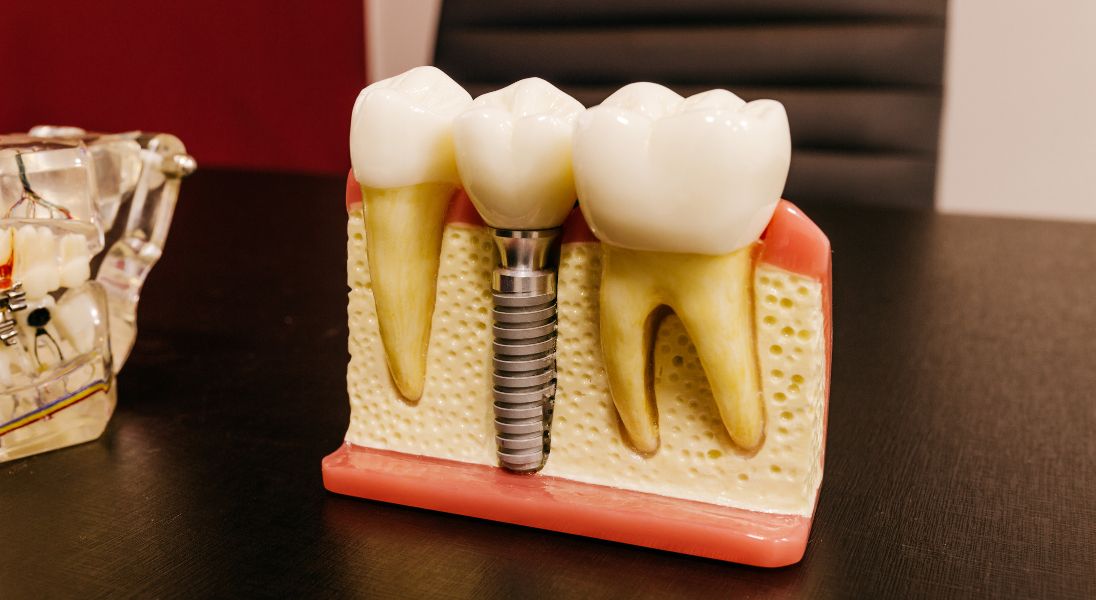Titanium vs. Zirconia Dental Implants: Choosing the Right Material for Your Dental Practice
Dental implants have become a cornerstone of modern restorative dentistry, offering a durable and functional solution for missing teeth. However, the success of implant therapy hinges significantly on material selection. While titanium and zirconia are widely used, a thorough understanding of their properties is essential for predictable and optimal outcomes. This guide provides a comprehensive comparison to aid clinicians in making informed decisions.
The Foundation of Integration
Both titanium and zirconia are classified as biocompatible, meaning they are generally well-tolerated by the human body. However, subtle differences exist.
Titanium has a long-established track record of successful osseointegration, the direct structural and functional connection between living bone and the implant surface. This robust integration is a key factor in titanium implants' long-term stability and success. While titanium is generally considered highly biocompatible, concerns have been raised regarding the potential release of titanium ions due to corrosion, which some studies suggest may contribute to localised inflammation.
Zirconia has emerged as a viable alternative, exhibiting excellent biocompatibility with a very low inflammatory response. Its bio-inert nature minimises ion release, potentially reducing the risk of adverse reactions. Furthermore, zirconia's low affinity for bacterial adhesion may offer advantages in minimising peri-implantitis, a significant concern in implant dentistry.
Balancing Strength and Flexibility
The mechanical properties of implant materials play a crucial role in their ability to withstand occlusal forces and maintain long-term stability. Titanium possesses high tensile strength and a degree of flexibility, allowing it to absorb and distribute occlusal forces effectively. This flexibility can be advantageous in reducing stress concentrations and minimizing the risk of fracture, particularly in situations with less-than-ideal bone density.
Zirconia exhibits exceptional compressive strength, making it highly resistant to fracture as well. However, it is more brittle than titanium and possesses less flexibility. This characteristic requires careful consideration during treatment planning, especially in patients with parafunctional habits or compromised bone support.
Achieving Natural-Looking Results
Aesthetics is a critical consideration, especially for implants placed in the anterior region. Zirconia's tooth-like colour and ability to avoid gingival discolouration make it an attractive option for anterior restorations. Its natural appearance contributes to a more seamless integration with the surrounding dentition. With titanium, its metallic hue can sometimes be visible through thin or translucent gingival tissues, potentially compromising the aesthetic outcome and can be a concern for patients seeking a natural-looking restoration.
Minimizing Complications
While titanium implants have a long history of success, the potential release of titanium ions due to corrosion has been implicated in some cases of peri-implantitis. While the exact mechanisms are still being investigated, minimizing inflammation is a key objective. Studies have suggested lower rates of peri-implantitis with zirconia implants compared to titanium, although further long-term research is needed. Zirconia's bio-inertness and minimal ion release may contribute to a reduced risk of peri-implantitis.
Ensuring Long-Term Success
Both titanium and zirconia implants offer the potential for long-term success when properly placed and maintained. Titanium implants have a well-established track record, with numerous studies demonstrating their longevity, often exceeding 25-30 years.
While zirconia implants are a more recent development, early clinical data suggest comparable longevity to titanium, with projected lifespans exceeding 20 years. However, there is not as much long-term data available for zirconia yet.
Tailoring Treatment to the Individual
The choice between titanium and zirconia should be based on a comprehensive assessment of the patient's individual needs and clinical circumstances. Zirconia is often preferred for anterior restorations due to its superior aesthetics and is a suitable alternative for patients with confirmed or suspected metal allergies.
When it comes to posterior restorations requiring maximum strength and flexibility, titanium may be recommended, especially in patients with limited bone density or parafunctional habits. It is also often favoured in cases of limited bone density due to its ability to osseointegrate effectively.
Cost
Titanium is generally more cost-effective due to lower material costs and simpler manufacturing processes while zirconia is typically more expensive due to higher material costs and the complexities of fabrication.
In the end, the selection of implant material should be a collaborative decision between the clinician and the patient. A thorough discussion of the advantages and disadvantages of each material, along with a comprehensive clinical evaluation, will ensure the most appropriate and predictable outcome for each case.
MV Dental Laboratory is committed to providing expert consultation and high-quality restorations to support you in delivering exceptional patient care. Contact us today to discuss your specific needs.
